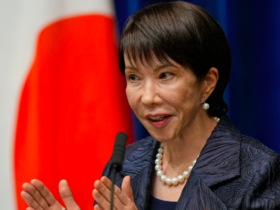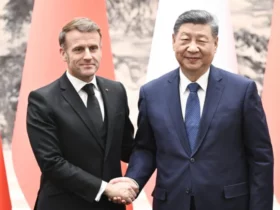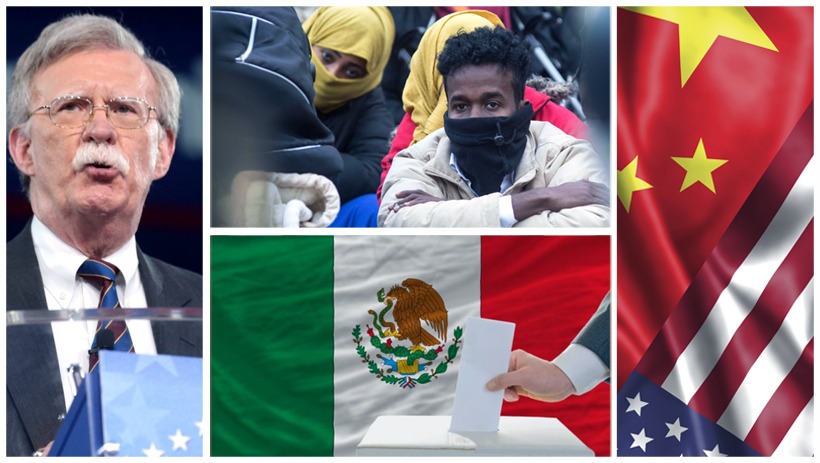To learn Mandarin is not to surrender to China—it is to learn to know China
To learn Mandarin is not to surrender to China—it is to learn to know China
By Mehmet Enes Beşer
Southeast Asia has always been a rich weave of cultures, languages, and identities. Diverse as that has been, it has also required a unifying linguistic strand that enables trade, diplomacy, and frequent intercourse across borders. European languages such as English, Dutch, and French served the purpose in colonial times. In the postcolonial period, English continued to dominate due to international reach and institutional presence. There is a surreptitious revolution under way now. With China’s economic and geoeconomic influence spreading across the continent, Mandarin Chinese is slowly making itself a de facto lingua franca—not by imperial decree but by pure economic muscle, cultural exchange, and strategic necessity.
It’s not taking place overnight, but it is also not taking place all at the same time, in every single country. The trend can nonetheless be discerned. From Confucius Institutes being opened up by Malaysian universities, to serving Chinese customers on the streets and in travel centers of Indonesian tourism operators, Mandarin is spreading on both formal and informal economy platforms. Even in countries that historically have had tensions or had complex relationships with China—such as Vietnam or the Philippines—learning Chinese is being seen more and more as more of an economic benefit. This is not identity adaptation, but opportunity perception.
Driving this trend is China’s position as the region’s largest trading partner and leading source of investment, tourism, and infrastructure finance. The Belt and Road Initiative has brought Chinese businesspeople, contractors, and engineers into the cities and rural villages of Southeast Asia. Routine business negotiations, tender bidding, and supply chain operations are now performed in Mandarin, not necessarily due to cultural sensitivity, but due to operating necessities. Under such circumstances, an ability to comprehend Chinese may become the determining success or failure factor in the negotiation of lucrative contracts.
But Chinese’s rise as a regional working language is not merely an economic story. It is the result of overt soft power construction. China has invested heavily in language and culture outreach, from Confucius Institutes to media partnerships, academic exchanges, and scholarships for Southeast Asian academics. Unlike Western concepts underlining democratic principles or political ideology, Chinese diplomacy is couched in terms of partnership, development, and sovereignty. Such less combative articulation has enabled the terminology to propagate without the political resistance normally bearing down on it.
Second, China’s huge popular culture business—through television drama, music, and cyberspace—is shaping regional pop culture in low-key, insidious manners. Young Southeast Asians increasingly get exposed to Mandarin from streams, social media, and video game screens. Language learning is no longer in the exclusive sphere of the classroom; it takes place through screens, songs, and shared digital engagement. Where English went around the globe in Hollywood and Silicon Valley, Chinese may have a similar soft linguistic imperialism of its own through iQIYI, Douyin, or WeChat.
But none of this added exposure translates to Mandarin replacing English altogether. English remains steady in diplomacy, education, and regional political frameworks such as ASEAN, where it remains a working language. Ethnic, religious, and historical factors in most Southeast Asian countries also preclude the full cultural absorption of Chinese language and presence. In Vietnam or Myanmar, enduring memories of war and political caution ensure that the rise of Mandarin will be tempered even while its economic relevance rises.
Why this language change matters, however, is not so much its inclusiveness, but its symbolism. Increasing Chinese use is a sign of a wider remaking of power in the region. Language, after all, is never a zero-sum game—it proclaims hierarchy, aspiration, and direction. When students choose to learn Mandarin, they are not merely acquiring a new language; they are preparing for a world that they think will be shaped, at least in part, by China. When governments subsidize the study of Mandarin, they are not simply expanding the curriculum—they are recognizing the way the world operates. Language is a gauge of power—and the gauge is shifting.
There are, to be certain, risks in this trend. Overreliance on one language—or, by extension, one power—may limit strategic maneuverability and cultural richness. As Mandarin grows more valuable, internet surveillance, ideological soft power, and language homogenization could also become problems. Southeast Asia’s strategic dilemma is to embrace multilingualism: to benefit from the economic potential of Chinese but still maintain local languages and maintain English as a balance. If managed well, language difference can be a source of strength, and not a fault line.
Conclusion
Mandarin Chinese is not dominating Southeast Asia as its new lingua franca through coercion or force, but through convergence—of markets, infrastructure, media, and regional aspiration. It’s a rising language not merely in terms of volumes of trade, but with shifting attitudes regarding where opportunity lies and who calls the shots in dictating the agenda for engagement. For the first time in recent history, a language that is non-Western is becoming central to much of the world—not as an imperial leftover, but as the everyday speech of forward-thinking pragmatism.
This shift is momentous. It illustrates 21st-century power as less likely to reside with tanks and treaties, but with teleconferences and textbooks. It also cautions that no influence is ever declared—embraced, articulated, and ultimately taken into the blood as axiomatic. If China continues on its present course, and Southeast Asia continues in its present entrenchment, the status of Mandarin in the region will rise even further.
Growth, however, does not automatically mean hegemony. The challenge for Southeast Asia is to engage with this shift in discourse forcefully, anticipatively, and with strategic intent. Language is politics and does not necessarily have to be a zero-sum win/lose. To learn Mandarin is not to surrender to China—it is to learn to know China, and to equip the next generation with the means to communicate, to negotiate, and to coexist in an increasingly multipolar world. In so doing, Southeast Asia can not only absorb change—but set the terms on which that change occurs.

















Leave a Reply